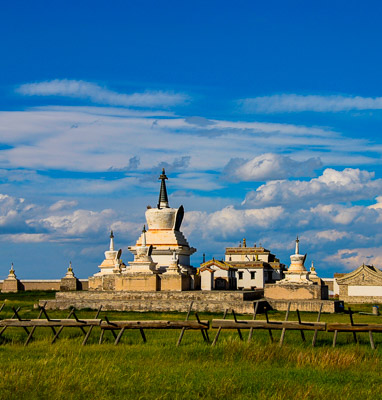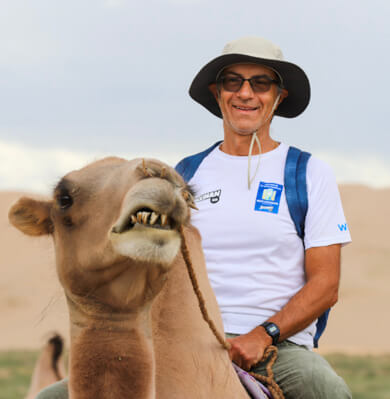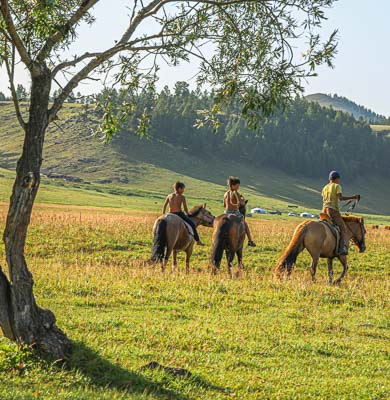1. What is Unique About the Gobi Desert? The Gobi Desert Name
Let’s start with its name. The Gobi is a Mongolian word, which describes the central Asian semi-desert, rich in vegetation, and genuinely supports human and animal life. There are many wild animals, and even nomads live within the Gobi desert area. Mongolians call it Gobi but called the Gobi desert by foreigners. Therefore, the word Gobi is a geographical term that describes the central Asian unique semi-desert. This name was first introduced to the world by American explorer Roy Chapmen Andrews in the 1920s.
2. Where is the Gobi Desert? Gobi Desert Location and Size
The Gobi desert is the fifth largest desert in the world. As well as the coldest desert if we do not consider the polar deserts. The Gobi desert covers the southern part of Mongolia and the northern and northwestern parts of China. The Gobi desert area covers 1.3 million square kilometers and is elevated approximately 1500 m above sea level.

3. Mongolia Gobi Desert Landscape
Sand covers only 5% of the Gobi desert in Mongolia. There are mountains with lush green valleys, random sand dunes, oases, rivers, lakes, historical sites, vast barren steppes, grassy steppes, and mud cliffs with dinosaur fossils. 40% of Mongolian territory is semi-desert. The Gobi desert landscape is attractive as it changes minute by minute, hour by hour, and day by day when driving.



4. Mongolia Gobi Desert Weather and Gobi Desert Temperature
The Gobi desert weather is extreme. The temperature changes within a day, monthly, and seasonally. The Gobi desert temperature reaches -38°C at its coldest and +42°C at its warmest in summer. The Gobi desert cold temperature fluctuates between -15°C and -30°C in winter and summer average temperature is +25°C to +38°C. January is the coldest month, while July is the warmest. The Gobi desert night temperature drops sharply because the cloudless sky does not block the cold air.
5. Mongolia Gobi Desert Population
There are 0.3 people per square km. The Gobi desert is one of the least populated areas where the nomads roam over the steppes
6. Second Important Paleontological Site
The Gobi desert is the second most popular paleontology site in the world. You will find many dinosaur species named after Mongolian landmarks and human names. Among them, the Flaming Cliffs discovery that proved the dinosaurs laid eggs significantly contributed to paleontological research. Flaming Cliff is a beautiful area, but dinosaur fossils are found randomly due to the tourist crowd. Where else can you explore the dinosaur fossils in nature now? You can find the dinosaur fossils in Khermen Tsav, Nemegt Cliffs, and Algui Ulaan Tsav.



7. Does it rain in the Gobi desert?
It rains in the Gobi desert. The Gobi desert receives approximately 7 inches of rainfall a year. It rained more than regular in the Gobi in the summer of 2018, which revealed many dinosaur fossils.
8. Stargazing and Blue Sky
The Gobi desert night sky is the brightest, with countless stars and cloudless blue daytime. The Gobi desert is the best area for stargazing.



9. 360° Views - What is it like in the Gobi Desert?
The general picture of the Gobi desert is flat steppes edge with the horizon. Wherever you go, you will enjoy 360°views. The Gobi desert rural accommodation ger camps are located in the most stunning view areas.

10. Gobi Desert Inside the Gobi Desert
As described above, the Gobi is a semi-desert that genuinely supports human and animal life. As the Gobi desert covers 40% of the vast Mongolian territory, there are 33 even drier deserts within the Gobi Desert. Mongolians call them 33 Gobi or deserts within the Gobi Desert.

11. Mongolian Gobi Desert Animals
The Gobi desert is home to many different animals like gazelle, ibex, wild sheep Argali, deer, Gobi jerboa, wolves, fox, corsac fox, marbled polecats, golden eagle, sand plovers, sandgrouse, and many more those sometimes seen while traveling. There are some endangered species in the Gobi desert. To name; black-tailed gazelles, Havtgai wild camels, wild asses, Gobi bear Mazaalai, snow leopards, and wild horses.

12. Mongolian Gobi Desert Plants
To survive, the plants in the Gobi desert have to lose their leaves until it rains again. Long roots are gifted to the Gobi desert plants that absorb water from a large area. The desert flora includes the saxaul tree, elm tree, poplar tree, saltwort, wild onions, desert shrubbery, bulbous plants, wild leek, and grass.



13. Barren Steppes to Flower Steppes
A considerable part of the Gobi desert steppes is barren, while plants cover the other half, mainly wild leek. The wild leak grows high and flowers well in some rainy years. The Gobi desert turns into a green land, and the barren steppes turn to flower steppes.

14. Gobi Desert Silk Road Trace
The ancient trade route Silk Road trace still exists in the Gobi desert. You can see the trail if you wish.
15. Two-humped camels/Bactrian Camels
The Gobi desert is the habitat of the Bactrian camels. 10% of the world's camels are Bactrian Camels or two-humped camels, those scattered in the central Asian Gobi desert. 430000 of the world's 2 million Bactrian camel heads are in Mongolia. The Bactrian Camel’s ancestor Havtgai wild camel still exists in the Gobi desert. The harsh climate of central Asia formed their 2 humps, which keep more fat and energy.

16. The Gobi Desert Bear
Have you ever heard about the Gobi bear? The Gobi bear Mazaalai is extinct and endemic to the Mongolian Gobi. There are less than 30 heads left.
17. The Gobi Desert Nomads are Real Nomads
The Gobi desert nomads are the best nomads among the nomads of the other parts of Mongolia. You know the Gobi desert has a shortage of pastureland, water, and wood. The Gobi desert receives the least precipitation within Mongolia. Therefore, the Gobi desert nomads move more often than the nomads in the other regions. Due to the demand to migrate regularly, the Gobi desert people prefer smaller gers and less furnishing. You should make at least one time visit to a Gobi desert nomad family to see the people’s lifestyle.

18. The Gobi Desert has more Monasteries
Buddhism introduced Mongolia from Tibet through China. That is why the southern part of Mongolia has more monasteries. Unfortunately, the socialists destroyed the monasteries in the 1930s, and many incomplete monastery ruins exist today.

19. The Gobi Desert Winter
The Mongolian desert is still a famous travel destination in winter. The Gobi desert is one of the few deserts that accept snowfall in winter. The empty Mongolian desert is even vacant in winter. You will enjoy yourself in the emptiness and communicate with authentic locals. The camels are marvelous in their winter coat, the sand sometimes covers by snow, and you will have more chances to observe the wildlife. Seeing the Gobi desert frozen waterfall is another unique thing. The Gobi desert's famous attraction Eagle Valley turns into an Ice Valley in winter. Some of our clients defined the Gobi desert sandstorm and snowstorm as one of the most unique experiences they have ever had. Winter Adventures of the Gobi Tour is the best winter tour in Mongolia.



20. Gobi Desert Resources
Gobi Desert is not only picturesque. Moreover, it is rich in wildlife and vegetation. The Mongolian Gobi desert is also rich in natural resources; copper, gold, crude oil, and coal deposits. Oyu Tolgoi is the world’s third-largest copper and gold mine, while Tavan Tolgoi ranked 10th in the world by its coal resource.
21. Gobi Desert Problem
The Gobi desert desertification is growing due to climate change, mining, and an increasing number of domesticated animals, mainly goats. The wild creatures are losing their habitat, and the vegetation type is decreasing.
MONGOLIA GOBI DESERT TOP 10 MUST-SEE ATTRACTIONS AND ACTIVITIESTHINGS YOU SHOULD KNOW BEFORE TRAVEL TO THE GOBI DESERT


